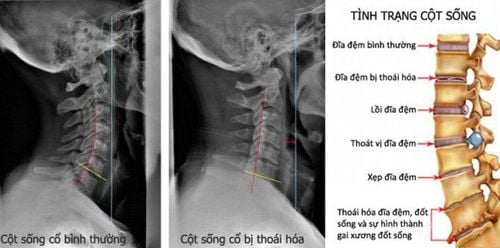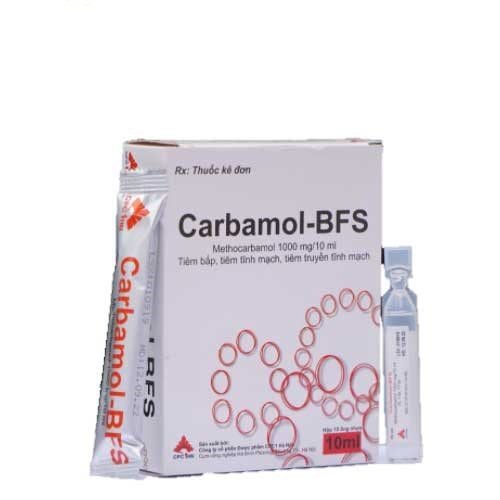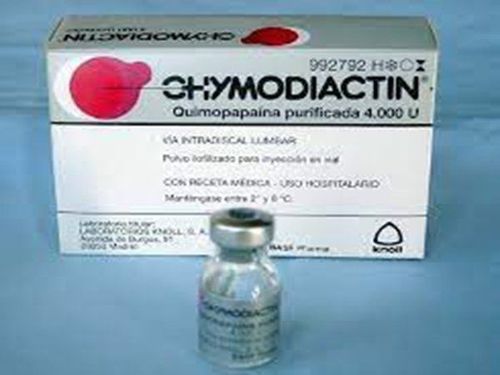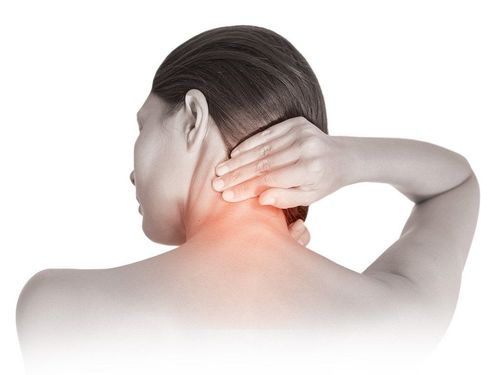This is an automatically translated article.
Nothing can stay healthy forever, especially the human body. Years of activity such as bending, lifting, turning and twisting can actually take a toll on our neck area. As such, it's no surprise that about two-thirds of people will experience neck pain at some point in their lives.
1. Cervical vertebrae: Your natural shock absorber
The cervical spine in your neck is made up of seven bones called vertebrae, which are separated by discs filled with a cushioning gel-like substance. Your cervical vertebrae both stabilize your neck and allow it to rotate smoothly from side to side and bend forward to back. "Without discs, the spine would be very stiff," explains Kee Kim, MD, associate professor of neurosurgery and chief of the department of chiropractic surgery at the University of California. "Discs allow our bodies to move the way we want. They also provide cushioning for the body and act as a shock absorber."
Over time, these natural shock absorbers wear out and can begin to degrade. The space between the vertebrae is narrowed and the nerve roots are compressed. This process is called cervical degenerative disc disease. Research shows that about 25% of asymptomatic people under the age of 40 and 60% over the age of 40 have some degree of degenerative disc disease. As degenerative disc disease progresses, your neck becomes less flexible, and you may feel pain and stiffness in your neck, especially late in the day.
When a disc ruptures or bulges out and puts pressure on the spinal cord or nerve roots, it is called a herniated disc or "slipped disc". Although cervical disc disease is generally a slow process, a herniated disc can sometimes happen quickly after an injury to the neck.
However, cervical disc disease is more than just a pain in the neck. The degenerative process can cause diffuse pain as well as numbness and weakness in your shoulders, arms, and hands. That discomfort and loss of mobility can greatly affect work, family, and quality of life.
The most common and obvious symptoms of cervical degenerative disc disease are neck pain and neck stiffness. When the disc presses on one or more nerves that run through the spinal cord; you may also have pain, numbness, or weakness that radiates down your shoulder, arm, and hand.

Quá trình thu hẹp không gian giữa các đốt sống cổ và các rễ thần kinh bị chèn ép được gọi là thoái hóa đĩa đệm cột sống cổ.
2. Diagnose your cervical disc disease
To diagnose your cervical disc disease, your doctor will first take a medical history to learn when symptoms started, how severe they were, and what caused them to improve or worsen. You will likely have a neurological exam to check strength, reflexes, and sensation in your arms and hands if they are affected.
Imaging tests like X-rays, magnetic resonance imaging (MRI), and computed tomography (CT) scans can help your doctor visualize your spinal cord to determine the source of your neck pain.
3. What should be done to treat cervical disc disease?
Whether you have degenerative disc disease or a slipped disc, you can most likely treat it without surgery. The first line of treatment for cervical disc disease is an over-the-counter pain reliever, including acetaminophen (Tylenol) and non-steroidal anti-inflammatory drugs such as ibuprofen (Motrin, Advil) and naproxen (Aleve). These medications can help reduce pain and inflammation. Your doctor may prescribe steroids or anesthetic pain relievers if over-the-counter medications don't work.
Physical therapy is another treatment option for cervical disc disease. The therapist may use neck traction or gentle movement of your muscles and joints to relieve pain and stiffness. A physical therapist can also help you increase your range of motion and show you the correct exercises and postures to help improve your neck pain.
Neck pain will improve with these maintenance treatments. If you also experience significant numbness or weakness, contact your doctor immediately to consider the next step in your treatment. Surgery is a treatment option, and deciding if you need surgery is often a subjective decision.
The main surgery for degenerative disc disease is called discectomy. In this procedure, the surgeon removes the degenerated disc. Discectomy is usually followed by artificial disc replacement surgery, in which a metal disc is inserted in place of the disc that was removed. The doctor may also then perform a cervical fusion spondylectomy. Specifically, a small piece of bone is implanted in the space between the vertebrae. As the bone heals, it fuses with the vertebrae above and below.

Vật lý trị liệu là một lựa chọn điều trị khác cho bệnh đĩa đệm đốt sống cổ.
4. What to do to keep your neck healthy?
It may take a few weeks for your neck pain to improve on its own, and it can take three months to a year for the bone to heal after surgery. Once your neck pain has subsided, you must keep your spine in good shape so that future discomfort can be avoided. “Whenever we see anyone with a spine problem, we think about long-term spine health,” said Anthony Delitto, Professor and chair of the Department of Physical Therapy at the University of Pittsburgh. Once symptoms improve, we want to help the person prevent further occurrence."
Although degenerative disc disease is often age-related, it can also be influenced by lifestyle factors To ensure that you keep your spine as healthy as possible, have a balanced diet and exercise regularly.You must not smoke because in addition to affecting your health, smoking. It is also a risk factor for cervical disc disease.Also, pay attention to your posture, keep your neck and back straight.
Although neck pain from cervical disc disease can recur, you will reduce the risk of disease if you take good care of your neck and the rest of your body
Follow the website: Vinmec.com regularly to update many other useful information.
Please dial HOTLINE for more information or register for an appointment HERE. Download MyVinmec app to make appointments faster and to manage your bookings easily.
Reference source: webmd.com












